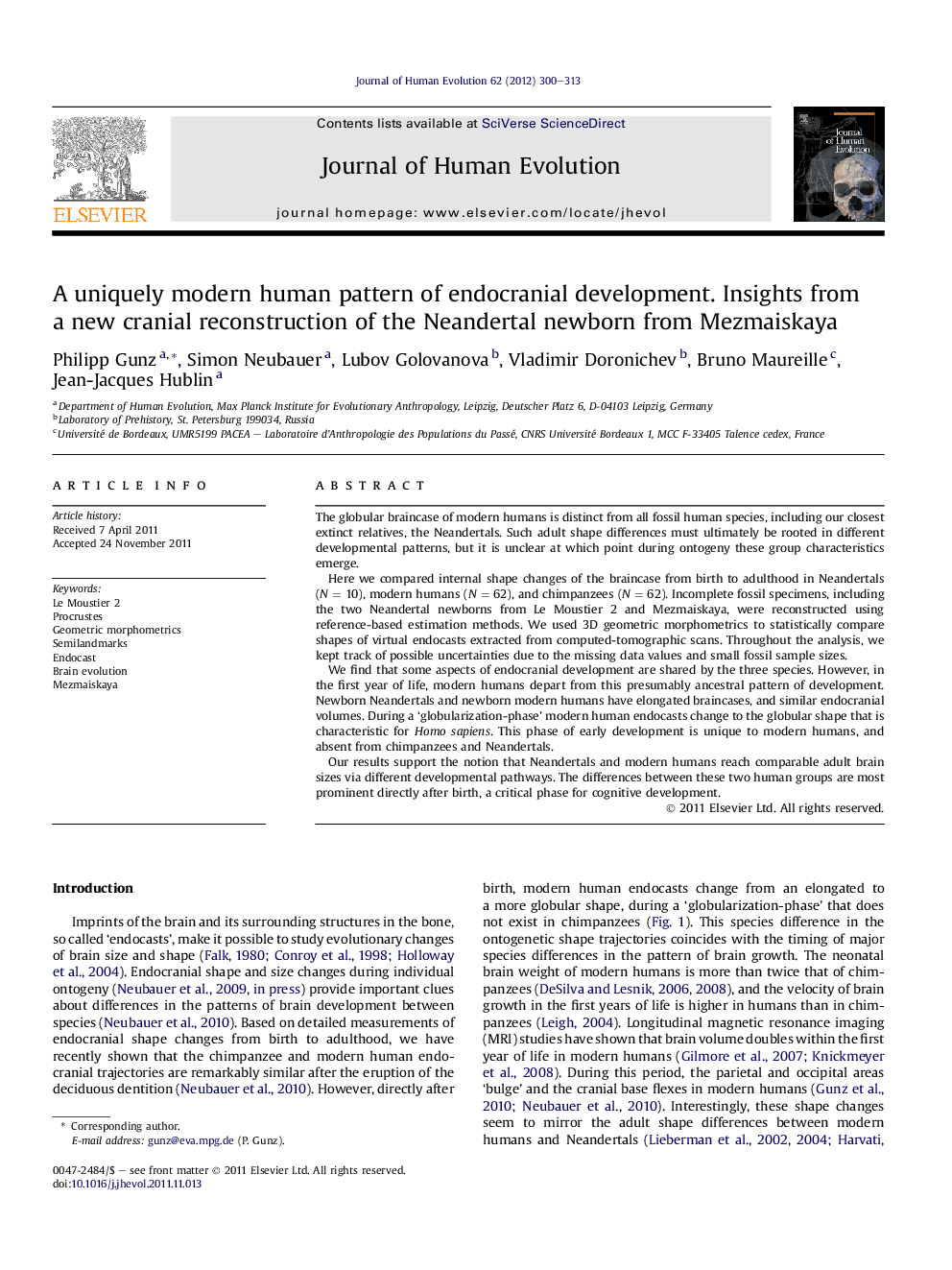| کد مقاله | کد نشریه | سال انتشار | مقاله انگلیسی | نسخه تمام متن |
|---|---|---|---|---|
| 4556479 | 1329482 | 2012 | 14 صفحه PDF | دانلود رایگان |

The globular braincase of modern humans is distinct from all fossil human species, including our closest extinct relatives, the Neandertals. Such adult shape differences must ultimately be rooted in different developmental patterns, but it is unclear at which point during ontogeny these group characteristics emerge.Here we compared internal shape changes of the braincase from birth to adulthood in Neandertals (N = 10), modern humans (N = 62), and chimpanzees (N = 62). Incomplete fossil specimens, including the two Neandertal newborns from Le Moustier 2 and Mezmaiskaya, were reconstructed using reference-based estimation methods. We used 3D geometric morphometrics to statistically compare shapes of virtual endocasts extracted from computed-tomographic scans. Throughout the analysis, we kept track of possible uncertainties due to the missing data values and small fossil sample sizes.We find that some aspects of endocranial development are shared by the three species. However, in the first year of life, modern humans depart from this presumably ancestral pattern of development. Newborn Neandertals and newborn modern humans have elongated braincases, and similar endocranial volumes. During a ‘globularization-phase’ modern human endocasts change to the globular shape that is characteristic for Homo sapiens. This phase of early development is unique to modern humans, and absent from chimpanzees and Neandertals.Our results support the notion that Neandertals and modern humans reach comparable adult brain sizes via different developmental pathways. The differences between these two human groups are most prominent directly after birth, a critical phase for cognitive development.
Journal: Journal of Human Evolution - Volume 62, Issue 2, February 2012, Pages 300–313